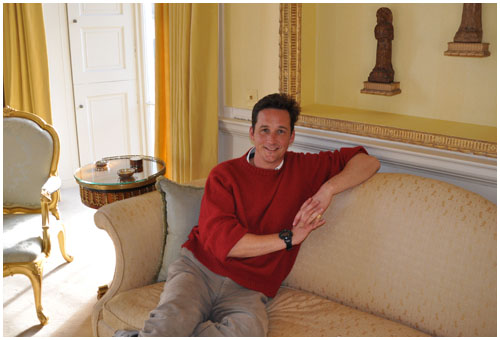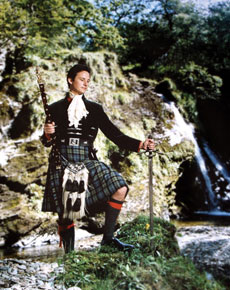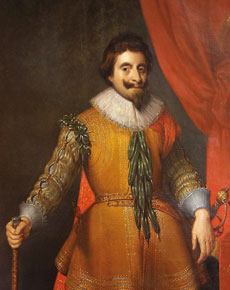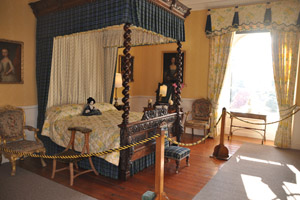
I had the pleasure of speaking with His Grace the Duke of Argyll at his family ancestral home Inveraray Castle on the west coast of Scotland. Born Torquhil Ian Campbell, among the 29 titles His Grace holds, he particularly prizes his designation as 28th MacCailein Mor, the 35th Chief of Clan Campbell.
The concept of "belonging" has always fascinated me and it was a privilege to speak to the head of the world's second-largest such extended family. The conversation with His Grace was a reminder that while there are many branches of mankind's family tree, we are all rooted in our shared human condition.
Photo courtesy of Inveraray Castle
Meg: Most Scottish clans can claim among their ancestors a mix of different races that include the Picts, the Celts, Viking and Norse raiders and Norman knights. Could you tell me about the Campbell clan ancestry?
Duke of Argyll: I am a direct descendent of the ancient high kings of Ireland from the Hill of Tara in the 7th century. The Campbells as a family came to notoriety in the late 1200s with Cailean Mor Caimbeul, also known as Sir Colin Campbell of Loch Awe and then grew to be what is arguably one of the most numerous Scottish families. The Vikings had a huge influence on the coastal regions of Scotland really through rape and pillage. My name is Torquhil, which is a deviation of the son of Thor, so there is still that Viking heritage there.

Photo courtesy of Inveraray Castle
Meg: I understand that clan means family in Gaelic.
Duke of Argyll: The word Clan does come from the Gaelic, clann, or progeny, which gives a sense of identity and shared descent. Many would have taken on a name although not related to the Chief as sign of solidarity, or for basic protection, or for much needed sustenance. So there are lots of different names that come under the Campbell banner.
Meg: In today's world, I think there is a great deal of desire to belong and feel a sense of connection.

Photo courtesy of Inveraray Castle
Duke of Argyll: This comes to the very core of the Clan system. I think it is really important to have that knowledge of your past. A lot of people don't even know who their grandparents are or where they came from or what they did or how many members of the family there were. Those with Scottish ancestry have a wonderful resource in Scotland to be able to fill the gaps in their knowledge and to provide that sense of belonging.
Meg: Can you talk a little bit about the castle?
Duke of Argyll: The present castle and the one that I live in was started in 1746 after the last great battle in Scotland, Culloden. The family received the Dukedom of Argyll in 1701 from William and Mary for supporting their quest for the throne. He became a Privy Councillor and was William's chief Scottish advisor. With this new role the family needed a castle fit for purpose.

The first drawings of the present castle were done by Sir John Vanbrugh for the 2nd Duke, but the final design was done by Roger Morris and construction was started by the 3rd Duke. The design was truly modern, baroque, Palladian and Gothic in style. The construction was eventually finished in 1789. The style is very French, big windows and this is where the family would come for the summer.
Meg: Inveraray Castle has an extensive gallery of family portraits and there are some colorful figures in the family history. Are there a couple of ancestors whom you have particular affection for?
Duke of Argyll: With a family like mine you can take your pick. There are wonderful portraits by Batoni, Medina, Raeburn, Ramsay, Gainsburgh, Winterhalter to name but a few.I think that my favorite is a beautiful picture of Lady Charlotte Campbell (1775-1861) by John Hoppner. She is painted as Aurora, the Roman goddess of dawn and adorns the wall in the Tapestry Drawing Room. We named our daughter after her.
Meg: I understand the MacArthur Room of Inveraray Castle has a particularly interesting history.
Duke of Argyll: There is rather a ghostly bed in this room which is elaborately carved and belonged to the MacArthurs of Loch Awe. Legend has it that a young Irish harpist was murdered by the Duke of Montrose's men in 1644. The bed was moved to the present castle from the old Inveraray Castle and the boy's ghost was so attached to the bed it traveled with it. When a member of the family is about to die, it is said that harp music is heard coming from the room.
Meg: What are the challenges of being the steward of a property like this?
Duke of Argyll: It is a huge responsibility to look after something like Inveraray. Imagine what it costs you to look after your house and then multiply it many-fold. My wife and I are very fortunate that the castle and estate have been looked after extremely well over the past couple of generations, so we have a good base to build on.
My father's advice was to try and hand the estate on to the next generation in a better position than it was when you inherited it. I always keep that in the back of my mind and try to think up ways of doing it. Not an easy challenge, but never the less a rewarding one.
Meg: What about the Highlands call to you?
Duke of Argyll: It's the magic of it and the way it makes me feel. People who visit Scotland and the west will understand what I am trying to say. It can be the rugged beauty of it, the proportions of mountains, water and sky. The fresh air and the lack of development give a very unspoilt aspect to it all. To me it's like no other place on earth and I have been to a great many of them.
Want to hear more? The complete interview is here. Want to see more? The pictures are here.
Meg Pier's www.ViewfromthePier.com features an extensive collection of "Peer to Pier" interviews with fascinating folk from around the world.